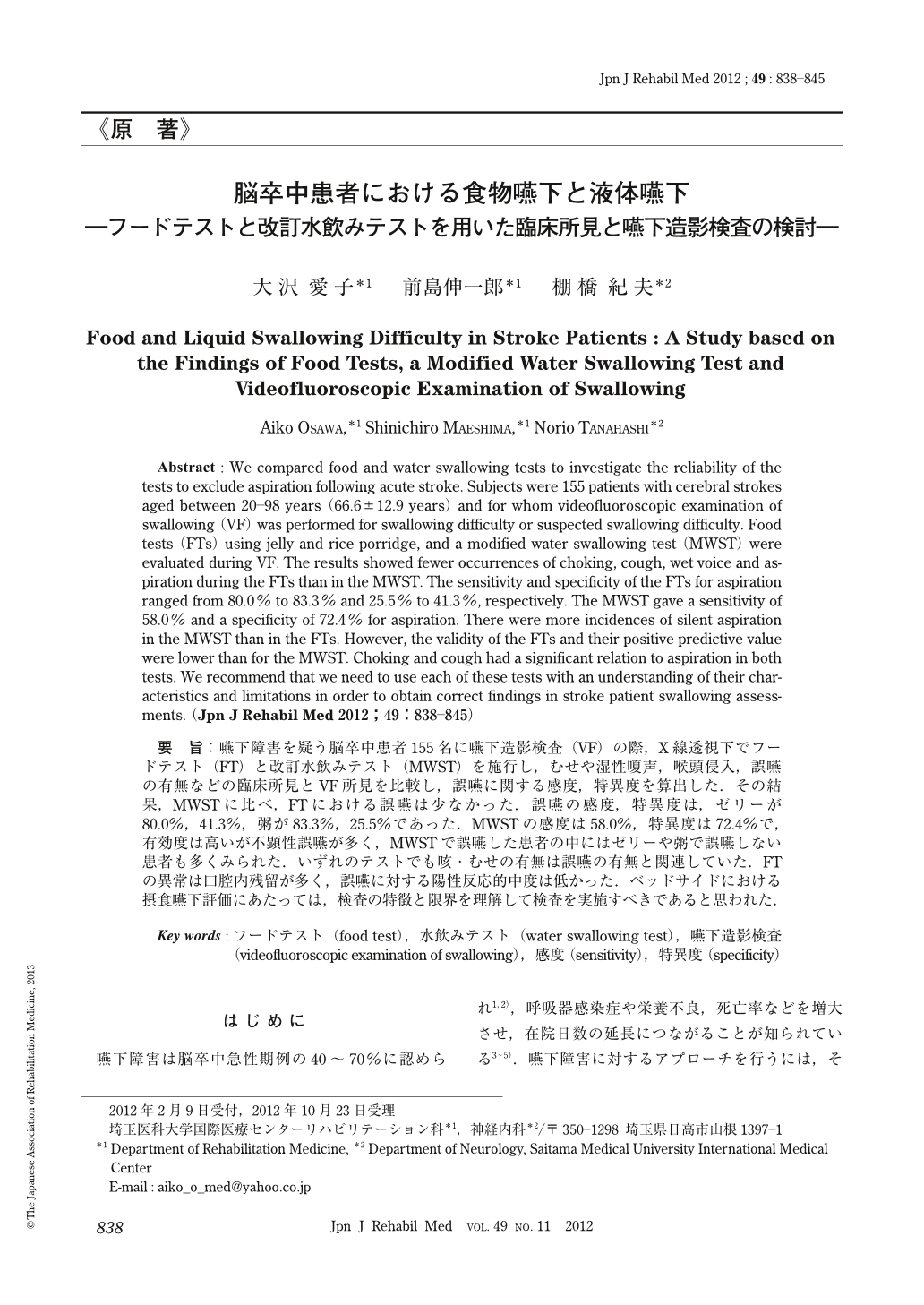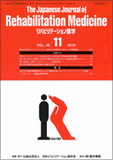Japanese
English
- 販売していません
- Abstract 文献概要
- 1ページ目 Look Inside
- 参考文献 Reference
- サイト内被引用 Cited by
要旨:嚥下障害を疑う脳卒中患者155名に嚥下造影検査(VF)の際,X線透視下でフードテスト(FT)と改訂水飲みテスト(MWST)を施行し,むせや湿性嗄声,喉頭侵入,誤嚥の有無などの臨床所見とVF所見を比較し,誤嚥に関する感度,特異度を算出した.その結果,MWSTに比べ,FTにおける誤嚥は少なかった.誤嚥の感度,特異度は,ゼリーが80.0%,41.3%,粥が83.3%,25.5%であった.MWSTの感度は58.0%,特異度は72.4%で,有効度は高いが不顕性誤嚥が多く,MWSTで誤嚥した患者の中にはゼリーや粥で誤嚥しない患者も多くみられた.いずれのテストでも咳・むせの有無は誤嚥の有無と関連していた.FTの異常は口腔内残留が多く,誤嚥に対する陽性反応的中度は低かった.ベッドサイドにおける摂食嚥下評価にあたっては,検査の特徴と限界を理解して検査を実施すべきであると思われた.
Abstract : We compared food and water swallowing tests to investigate the reliability of the tests to exclude aspiration following acute stroke. Subjects were 155 patients with cerebral strokes aged between 20-98 years (66.6±12.9 years) and for whom videofluoroscopic examination of swallowing (VF) was performed for swallowing difficulty or suspected swallowing difficulty. Food tests (FTs) using jelly and rice porridge, and a modified water swallowing test (MWST) were evaluated during VF. The results showed fewer occurrences of choking, cough, wet voice and aspiration during the FTs than in the MWST. The sensitivity and specificity of the FTs for aspiration ranged from 80.0% to 83.3% and 25.5% to 41.3%, respectively. The MWST gave a sensitivity of 58.0% and a specificity of 72.4% for aspiration. There were more incidences of silent aspiration in the MWST than in the FTs. However, the validity of the FTs and their positive predictive value were lower than for the MWST. Choking and cough had a significant relation to aspiration in both tests. We recommend that we need to use each of these tests with an understanding of their characteristics and limitations in order to obtain correct findings in stroke patient swallowing assessments.

Copyright © 2012, The Japanese Association of Rehabilitation Medicine. All rights reserved.


